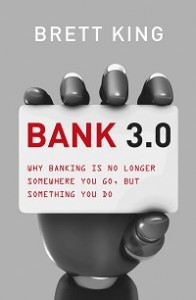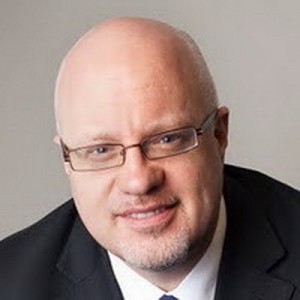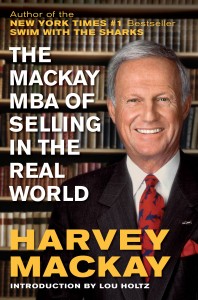
Daniel Isenberg has likely written one of the most important books on entrepreneurship I’ve ever seen. It is not about pitch decks or pitching venture capitalists for funding. The book entitled, Worthless, Impossible and Stupid: How Contrarian Entrepreneurs Create and Capture Extraordinary Value, actually discusses something far more important, the stories of people who had contrarian ideas that most people thought would never work.
I really loved reading this book! Anyone would actually as it has rich, fresh, and obscure stories. The kind and wonderful folks at Harvard Business Review Press were kind enough to arrange an interview with Daniel Isenberg about the book. The capital letters are how he returned it and I present that as the interviewee answered exactly.
Do entrepreneurs have to be young or have an engineering degree?
Daniel Isenberg : OF COURSE NOT. NOT ONLY IS THIS EMPIRICALLY THE CASE, IT SHOWS THAT WE HAVE DEVELOPED VERY NARROW, AND I THINK UNHELPFUL STEREOTYPES OF ENTREPRENEURS. I HAVE ENGAGED WITH HUNDREDS OF ENTREPRENEURS IN MY 30 YEARS AS ENTREPRENEUR, VC, ANGEL, AND EDUCATOR AT HARVARD AND ELSEWHERE, AND IN DOZENS OF COUNTRIES. LET’S TAKE ISRAEL JUST AS ONE EXAMPLE: IT IS RIGHTLY FAMOUS FOR ITS HIGH TECH ENTREPRENEURSHIP. BUT SOME OF THE MOST SUCCESSFUL AND VALUABLE ENTREPRENEURIAL VENTURES THERE INCLUDE SODA STREAM (HOME CARBONATION SYSTEMS), TEVA (WORLD LEADER IN GENERIC DRUGS), AND ISCAR (WORL LEADING CUTTING TOOLS MAKER, ACQUIRED BY BUFFETT). THESE ARE FAR FROM OUR STEREOTYPICAL AMAZONS APPLES AND GOOGLES, EVEN THOUGH ISRAEL HAS THOSE AS WELL. SODA STREAM WAS SAVED FROM THE VERGE OF BANKRUPTCY AFTER THIRTY YEARS IN THE MARKET, AND WAS RAPIDLY EXPANDED INTO A $1 BILLION NASDAQ COMPANY. REPURPOSING OF EXISTING UNDERVALUED (“WORTHLESS”) ASSETS BY EXPERIENCED EXEUCTIVES IS AS LEGITMATE A PATH TO entrepreneurial EXTRAORDINARY VALUE CREATION AS STARTING A HIGH TECH COMPANY FROM SCRATCH.
Entrepreneurs don’t have to have an amazing new idea in an area of deep expertise?
Daniel Isenberg : THAT SURPRISED ME – WHEN I STEPPED BACK AND LOOKED AT THE DOZENS OF CASES I HAD WRITTEN, I SAW THAT NOT JUST ONE OR TWO STARTED WITHOUT EXPERTISE, BUT A LARGE NUMBER. WE SHOULD NOT MISINTERPRET THAT AS ADVOCATING IGNORANCE, BUT THAT EXPERTISE IS NOT A PREREQUISITE. OF COURSE, PRETTY SOON THE ENTREPRENEUR BETTER LEARN ALL THERE IS TO KNOW.
Almost all of the entrepreneurs in your book were not technical founders. I found that to be amazingly refreshing and more representative of reality. Why do you think our society choses to hyper-focus on a small subset of technology entrepreneurs and how can we change that dynamic?
Daniel Isenberg I WROTE WORTHLESS IMPOSSIBLE AND STUPID IN ORDER TO INFLUENCE THE ENTREPRENEURSHIP DIALOG, BROADEN IT, MAKE IT MORE REAL-LIFE. THE MEDIA ARE NATURALLY MORE ATTRACTED TO THE MORE SNAZZY AND VISIBLE EXAMPLES. (LET ME REMIND EVERYONE, THOUGH, THAT THE IPHONE IS NOT ENTREPRENEURSHIP BUT VERY SUCCESSFUL INCREMENTAL INNOVATION BY A LARGE ESTABLISHED CORPORATION.) I INVITE THE LEADING ENTREPRENEURIAL SUPPORT FOUNDATIONS TO HELP BROADEN THE DIALOG AS WELL BEYONE SOCIAL MEDIA, IT, YOUTH AND STARTUPS. IT WILL HELP US ALL TO DO SO.
So if everyone says an entrepreneurial idea is great, you state that you should likely run? Please explain.
Daniel Isenberg: IF YOU HEAR THAT A BUSINESS IDEA IS GREAT, YOU CAN ASSUME THAT (IN MOST CASES) DOZENS IF NOT HUNDREDS OF PEOPLE AROUND THE WORLD HAVE THE SAME OR A BETTER IDEA. EXTRAORDINARY VALUE IS CREATED BY IGNORNING MARKET DEMAND IN MANY CASES, ANTICIPATING IT, OR EVEN CREATING IT. THAT IS ONE OF THE FALLACIES OF EQUITY CROWDFUNDING: IF EVERYONE RUSHES TO INVEST IN SOMETHING, THEN IT IS LIKELY NOT A GOOD INVESTMENT. NOT DEFINITELY, BUT AS LIKELY AS NOT.
In one of the best sentences of the book you stated, “It is the job of the entrepreneur to sniff out and realize opportunity that is overlooked, undervalued, or even berated by others.” That is powerful stuff. How did you develop that definition over the years?
Daniel Isenberg : FROM DEEP IMMERSION IN THE FIELD. ANYONE WHO IS INVESTING IN OR EVEN STUDYING ENTREPRENEURS WITH HIS OR HER EYES WIDE OPEN, CANNOT HELP BUT LEARN OVER TIME THAT THE GREAT STUFF, THE GREAT ACHIEVEMENTS, ARE IN THE SURPRISES. ENTREPRENEURSHIP ALMOST ALWAYS SURPRISES THE MARKET. THAT MEANS THAT THE MARKET EXPECTS SOMETHING ELSE. I HAVE BEEN IN THE FIELD FOR OVER 30 YEARS NOW, AND I HAVE BEEN WRONG SO MANY TIMES IN BOTH DIRECTIONS. IT IS SOBERING. AS MARC ANDREESEN SAID A FEW MONTHS AGO,” It’s in the nature of venture capital and start-up investing that there are always stupid investments. The problem is that you never know which ones are which. I get these things as wrong as anybody else.”
IT HAS GIVEN ME A LOT OF FOOD FOR THOUGHT TO REALIZE THAT THE BEST OF THE BEST GET IT WRONG A LOT OF THE TIME. THAT SAYS SOMETHING ABOUT ENTREPRENEURSHIP ITSELF. AS SCHUMPETER WROTE, THERE IS SOMETHING INTRINSICALLY UNPREDICTABLE ABOUT ECONOMC GROWTH – HE WAS ALSO REFERRING TO ENTREPRENEURSHIP.
How should an entrepreneur that has an idea that they know to be valid and they are berated by society overcome that negativity? Who and in what order do they need to convince people beyond themselves?
Daniel Isenberg : THERE IS NO RECIPE FOR THIS. IF THERE WERE, IT WOULD BE PRICELESS. I THINK CONTINUALLY BLENDING FORWARD MOTION WITH BACKWARD REFLECTION. YOU HAVE TO MIX THE WATER OF INCREDIBLE OPTIMISM AND THE ABILITY TO ENVISION THE INVISIBLE, WITH THE OIL OF HARD HEADED, PASSIONLESS OBJECTIVITY. AND COMBINE THAT WITH AMAZING SELLING SKILLS – I HAVE SEEN EXCELLENT SALES PEOPLE IN ACTION, AND THEY CAN MAKE MARKETS HAPPEN THROUGH SKILL. IN MANY CASES, THERE IS A THIN LINE BETWEEN GREAT SUCCESS AT SELLING A PRODUCT, AND ABJECT FAILURE, AND IT OFTEN HAS LITTLE TO DO WITH THE PRODUCT OR SERVICE ITSELF.
In your view, what are the differences between an entrepreneurship launching a product versus a service?
Daniel Isenberg : I DON’T THINK THERE ARE GENERIC DIFFERENCES. THE DIFFERENCE BETWEEN PRODUCT AND SERVICE COMPANIES ARE BLURRED IN ANY EVENT: DOES LEXUS SELL AN AMAZING CAR, OR AMAZING SERVICE? I BOUGHT MY LEXUS BECAUSE OF THE AMAZING SERVICE.
How should David go up against Goliath with tens of thousands of employees in a service situation have a chance of succeeding?
Daniel Isenberg: IT IS NOT ALWAYS JUST GOING AGAINST GOLIATH, ALTHOUGH THAT IS CERTAINLY POSSILE AND HAPPENS A LOT. STUDIO MODERNA BUILT A SERVICE COMPANY IN EASTERN EUROPE IN THE FACE OF THE INABILITY HUGE COMPETITORS WITH EXPERIENCE AND MONEY TO DO THE SAME, AND THEY DERIDED HIM ALONG THE WAY. WHO’S SMILING NOW?
BUT THERE ARE ALSO SMART PARTNERING STRATEGIES. IT WOULD HAVE BEEN INTERESTING FOR DAVID TO HAVE CONSIDERED A STRATEGIC ALLIANCE.
One of my favorite stories in the book is Sea To Table. In the 1800’s, the refrigerated boxcar eventually changed the meat slaughter and delivery process. Why do you think it took almost 150 years for someone else to do something similar with fish?
Daniel Isenberg : I DON’T KNOW THE ANSWER TO THAT. IN RETROSPECT, MOST SUCCESSFUL THINGS APPEAR MUCH MORE DOABLE AND OBVIOUS THAN IN PROSPECT. BUT CERTAINLY MODERN INFRASTRUCTURE AND TECHNOLOGY AND LOGISTICS GREATLY FACILITATED SEA2TABLE INVENTING A COMPLETELY NEW MARKET.
I regularly attend the Joe Levy Group entrepreneurial meetings, I’m amazed by the patterns one sees in founders that are not successful and the ones that make it. What patterns have you seen and how can those patterns be reverse engineered into practical advice?
Daniel Isenberg : IF I KNEW THE ANSWER TO THAT, I WOULD INVEST IN ALL THE FUTURE SUCCESSES AND AVOID THE FUTURE FAILURES! WE HAVE TO BE A LITTLE CAREFUL OF HINDSIGHT BIAS AND RESPECT MARC ANDRESSESEN AND OTHERS’ WORDS THAT EVEN THE BEST DO ‘STUPID’ THINGS. OF COURSE, WITH EXPERIENCE, INVESTORS AND ENTREPRENEURS MAKE “BETTER AND BETTER” MISTAKES, SO THAT YOU MAKE MISTAKES WHILE YOU ARE SUCCEEDING, NOT WHILE YOU ARE FAILING.





